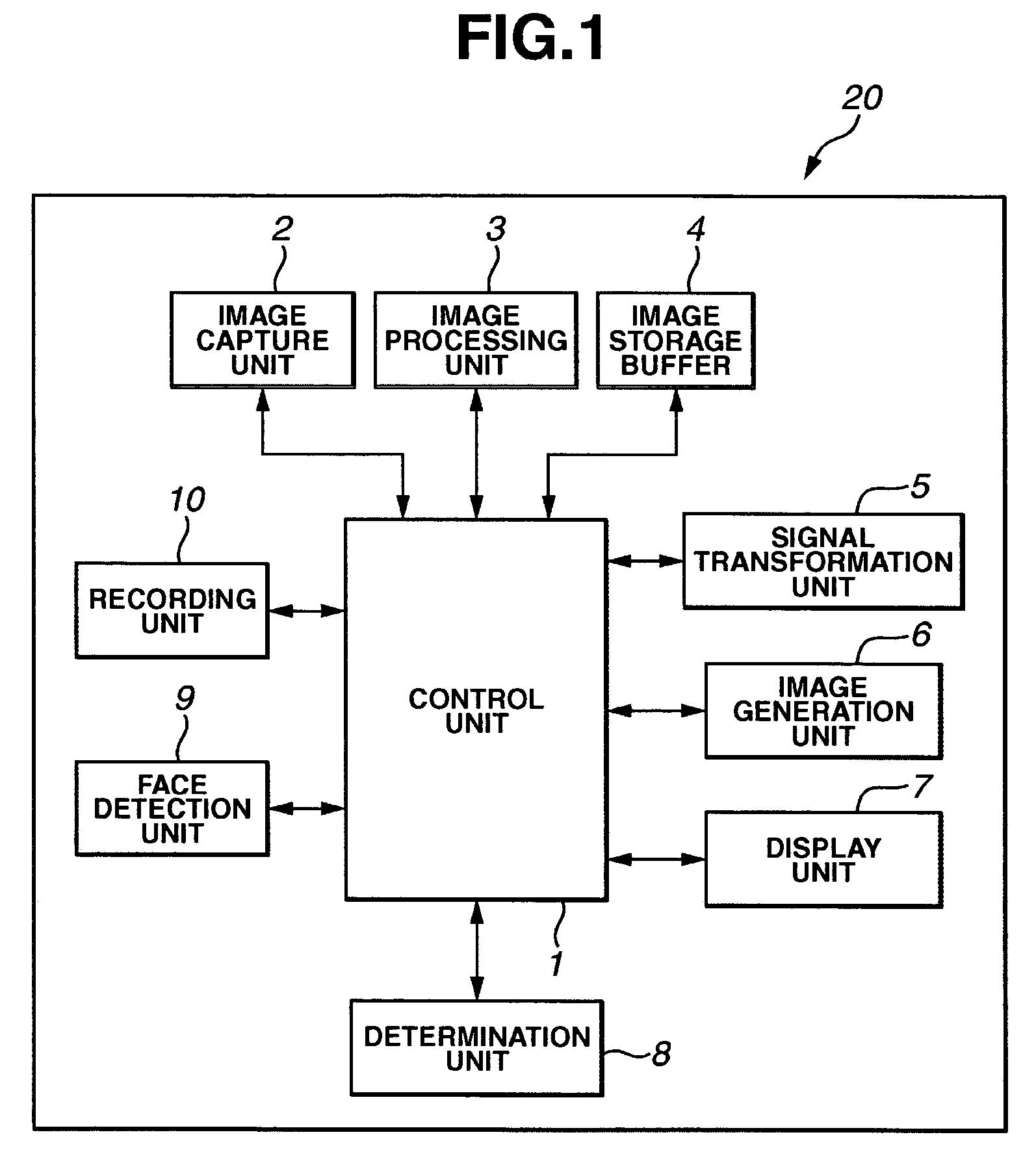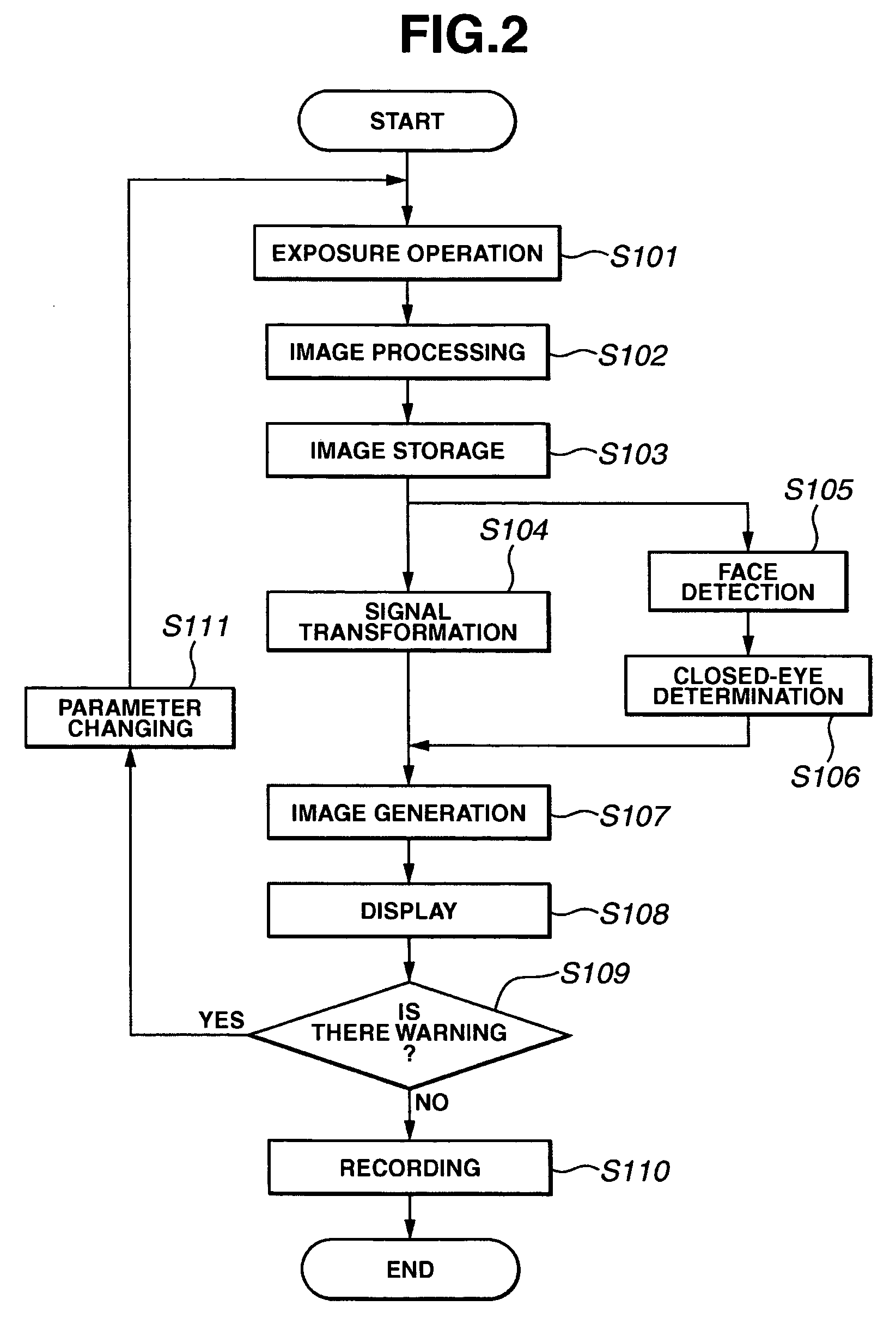Image capture apparatus and control method therefor
a technology of image capture and control method, which is applied in the direction of cameras, instruments, printers, etc., can solve the problems of time-consuming and cumbersome, affecting the composition of a subject (a photographic subject) during a user's time, and unable to capture an optimal image. to achieve the effect of easy optimal captur
- Summary
- Abstract
- Description
- Claims
- Application Information
AI Technical Summary
Problems solved by technology
Method used
Image
Examples
first embodiment
[0033]FIG. 1 shows a configuration of an image capture apparatus 20 according to a first embodiment of the present invention. Description will be made by taking an example of a digital camera as the image capture apparatus 20.
[0034]Referring to FIG. 1, a control unit 1 controls a signal for controlling each function of the image capture apparatus 20.
[0035]An image capture unit 2 includes a solid-state image sensor such as a charge-coupled device (CCD) or a complementary metal-oxide semiconductor (CMOS) having a photoelectric conversion function, an imaging optical system for guiding subject light to the solid-state image sensor, a light amount adjustment member constituted of a diaphragm or a shutter for adjusting an amount of light reaching the solid-state image sensor, an auto-gain controller (AGC) for adjusting a gain of an output signal of the solid-state image sensor, and the like.
[0036]An image processing unit 3 receives a signal output from the image capture unit 2 and genera...
second embodiment
[0104]Next, an image capture apparatus according to a second embodiment of the present invention will be described. The description will focus on differences from the first embodiment.
[0105]According to the second embodiment, an occurrence of a red-eye phenomenon in a subject is a criterion for execution of warning.
[0106]As is well known, the red-eye phenomenon is that in the case of capturing a person under a situation of low illuminance, light is emitted from a flash apparatus to execute capturing, and the flash light emitted from the flash apparatus is reflected on the back of each eyeball, causing eyes of the person to be photographed red.
[0107]The determination unit 8 in the second embodiment determines an occurrence of a red-eye phenomenon on a face detected by the face detection unit 9.
[0108]FIG. 9 is a flowchart illustrating a flow of processing according to the second embodiment.
[0109]The flow is different from that of FIG. 2 in that a red-eye phenomenon is detected from a ...
third embodiment
[0120]An image capture apparatus according to a third embodiment of the present invention will be described. According to the second embodiment, the occurrence of a red-eye phenomenon is a criterion for warning. According to the third embodiment, however, an in-focus state or a blurring state of a face area of a subject is a criterion for warning.
[0121]The determination unit 8 in the third embodiment determines a blurring state or an in-focus state of a face detected by the face detection unit 9.
[0122]Generally, as images unsuited for capturing, there are a blurred image and an out-of-focus image. Blurring is classified into a camera shake caused by a camera being moved when a shutter button is pressed and a subject shake caused by a subject moving.
[0123]In both cases, an image area frequently moves in a fixed direction. For example, as a frequency analysis method, there is a method of detecting blurring if specific frequency components that are absent in normal images are determine...
PUM
 Login to View More
Login to View More Abstract
Description
Claims
Application Information
 Login to View More
Login to View More - R&D
- Intellectual Property
- Life Sciences
- Materials
- Tech Scout
- Unparalleled Data Quality
- Higher Quality Content
- 60% Fewer Hallucinations
Browse by: Latest US Patents, China's latest patents, Technical Efficacy Thesaurus, Application Domain, Technology Topic, Popular Technical Reports.
© 2025 PatSnap. All rights reserved.Legal|Privacy policy|Modern Slavery Act Transparency Statement|Sitemap|About US| Contact US: help@patsnap.com



